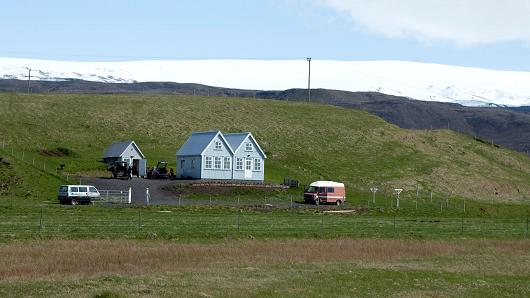-
Tips for becoming a good boxer - November 6, 2020
-
7 expert tips for making your hens night a memorable one - November 6, 2020
-
5 reasons to host your Christmas party on a cruise boat - November 6, 2020
-
What to do when you’re charged with a crime - November 6, 2020
-
Should you get one or multiple dogs? Here’s all you need to know - November 3, 2020
-
A Guide: How to Build Your Very Own Magic Mirror - February 14, 2019
-
Our Top Inspirational Baseball Stars - November 24, 2018
-
Five Tech Tools That Will Help You Turn Your Blog into a Business - November 24, 2018
-
How to Indulge on Vacation without Expanding Your Waist - November 9, 2018
-
5 Strategies for Businesses to Appeal to Today’s Increasingly Mobile-Crazed Customers - November 9, 2018
Iceland’s Biggest Volcano Under ‘Close Watch’ as Tremors Calm
Two unusually large earthquakes hit one of Iceland’s biggest volcanoes early today, raising concerns of a possible eruption, the Icelandic Met Office said.
Advertisement
Katla volcano, located near the southern end of Iceland’s eastern volcanic zone, is hidden beneath the Myrdalsjökull icecap. The two earthquakes are worrying but small earthquakes are common in the summer, according to the Meteorological Office.
“Measurements around Katla are not detecting signs of increased ground deformation or seismic tremor, both of which could be indicators of magma movement”, the office said in a statement.
Another indication of an impending Katla flare-up is the 2010 blast of neighbouring Eyjafjallajokull. Katla erupted once in 1955 and again in 1999, but neither was strong enough to break through the ice at the volcano’s top.
If Iceland’s Katla volcano does erupt in the near future, the monstrous volcano has the potential of doing serious and substantial damage.
The last major eruption of the volcano happened in 1918, creating an outburst of ash that persisted for over a month.
An eruption of the Grimsvotn volcano in Iceland followed in 2011, spewing a 12-mile high cloud of ash into the air.
Thousands of flights were cancelled and reports said that the volcanic eruption cost the global economy $5 billion. Experts note that the volcano, which stands at 1,500 meters, usually erupts every 50 years.
“In partnership with organisations such as NATS, the Met Office and airlines, the CAA has developed improved forecasting of ash density and a new system of regulating airspace”.
Advertisement
“We continue to monitor Katla closely and will issue updates on IMO’s web-site if the situation intensifies”.





























